Spectroscopy in Food Industries
Food is a substance that has many nutrients that are important for the humans. For general population certain amount of some nutrient can affect their health (postive or negative). Furthermore, for food manufacturers, certain amount of some nutrient can be an indicator of a bad or good product. In fast growing food industry, being innovative, and being to able produce the best product is one of the most important thing. One of the analytical method that can help us determine food quality are enzyme methods. Tradicional methods require certain material costs, the duration of the analysis is longer, an experienced analyst is required, and in addition they are less accurate. Unlike traditional analytical methods, enzyme methods are simple, precise and specific, and only a spectrophotometer or colorimeter, a micropipette with appropriate extensions and some small laboratory inventory (cuvettes) are required from the equipment.
Enzyme methods in Beer Industry

In beer industry we can monitor many parameters by enzymatic methods.
When beer has an off flavor, that is typically considered due to acetobacter present during fermentation with excessive aeration. In that case the aerobic bacteria turns ethanol to acetic acid which importatnt parameter for beer flavor.
Another available measurement parameter is acetaldehyde, which is produced from the conversion of acetic acid.
If we want to know how much starch will convert to sugars in the mashing process, we will detect the enzyme responsible for that reaction, α-Amylase. Α-Amylase is measured in malt. Variation of Malt-7, A using a spectrophotometer at 650 nm.
If you are into the production of sour beers, you will have to know the levels of citric acid.
Speak of fermentation, the main process in beer industry, one of the most important parameters in is ethanol that gives us alcohol determination. In addition to alcohol, glycerol is also formed and contributes to the beverage body and fullness. Another product of fermentation that gives beer an acidic flavor is pyruvic acid.
Diacetyl impart a buttery flavor produced by yeast, and Ber-25A can be measured at 530 nm or close to.
For measurement of sulfur dioxide we use Malt-11 method measured at 560 nm. Total SO2 Beer-21 with photometer or spectrophotometer at 550 nm.
If needed, Wort-12 method measured at 570 nm will determine free amino nitrogen.
Measurement of alcohol is determined by Beer-4.F is an enzymatic method measured at 340 nm. References Boehringer Mannheim (R Biopharm) for enzyme.
Color, important sensory property, is measured at 430 and 700 nm (Beer-10.A method). Bandwidth 1 nm or less. Beer-10.B is a photometric method using 430 nm.
For detection of iron it is used Beer-18.A using a spectrophotometer or photometer in the 500-540 nm range, while for the copper it is used Beer-19.A using a spectrophotometer or photometer with blue-green or green filter. Absorbance measured at 435 nm with spectrophotometer
Total Polyphenols are involved in beer oxidation and haze formation. Detection of them is international method Beer-35 measured at 600 nm with spectrophotometer.
For quantification Dissolved Oxygen you can use Beer-34 using a spectrophotometer at 615 nm or colorimeter with wavelength between 640-700 nm.
Total Carbohydrate can affect organoleptic properties so they can be measured with Beer-41. measured at 490 nm with a spectrophotometer.
Another important parameter is Flocculation, Microbiology Yeast-11.B Spectrophotometric method measuring absorbance at 600 nm. 1 cm path length with 0.5 mm slit.
Enzyme methods in Wine Industry

Wine is very complex product and if you want to have top class product there are a lot parameters to measure.
Acetic Acid, in lower concentations has positive affect on flavour, while in higher concentrations is unwanted. It is monitored throughout the process, also known as Volatile Acidity (VA).
Acetaldehyde is produced by yeast and bacteria during fermentation and oxidation. It is important for the flawor, unwanted in higher concentrations.
During the fermentation, a constituent of YAN that is needed is Ammonia. In wine it can impact on flavor and microbial stability.
It is important to measure L-Arginine/urea/ammonia. High L-Arginine content in juice influences the formation of ethyl carbamate (carcinogenic) when there is a high YAN in the diammonium phosphate form.
Ascorbic Acid is naturally present in grape. It is an antioxidant in white wine that prevents browning. EU has a 150 mg/L limit.
If you want to increase acidity levels you use Citric acid.
One of the most important parameters in fermentation proces is ethanol that gives us alcohol determination. Quantities over 17.5% indicate its addition. Quality indicator of the finished wine is glycerol, which is important for the taste of the wine. Occurs at approximately 1% v/v.
For fermentation we need D-Glucose/D-Fructose. They are naturally occurring in grape and they ferment to alcohol. Known as reducing sugars and indicators of grape quality.
D-Lactic acid is an indication of wine spoilage by lactic acid bacteria. L-Lactic increases as L-Malic acid decreases from malolactic acid fermentation.
Detection of D-Malic acid is an indication that it has been added to the wine. L-malic is monitored along with L-Lactic acid during malolactic fermentation.
Mannitol, acetic acid and lactic acid can be formed from reduction of fructose, giving wine a vinegary-estery, slightly sweet taste.
We can measure Free Sulfite & Total Sulfite. Antimicrobial and antioxidant when SO2 is unbound. Additive after malolactic acid fermentation.It is added early during the vinification process to prevent the growth of unwanted microorganisms, and later for the stabilization of finished wines.
Tartaric Acid is predominate acid contributing to total acidity. Also used as an additive to increase acidity and decrease pH levels in order to prevent microbial spoilage.
Enzyme methods in Bread Industry
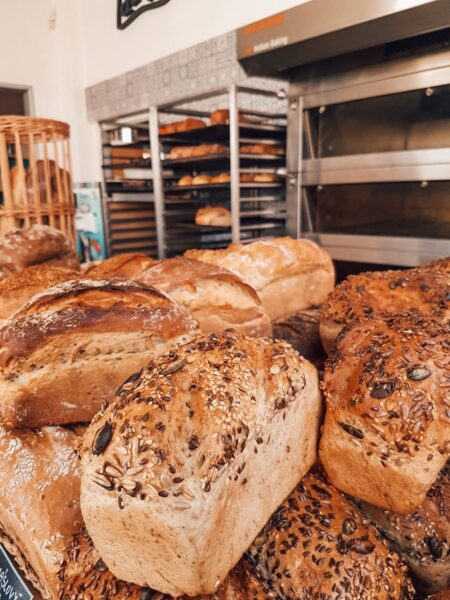
In bread and cereal products industry we can monitor the following parameters by enzymatic methods. By following concentrations of α-Amylase we can monitoring conversion of starch to sugar.
We can regulat mold inhibition through adding Acetic acid. Another regulator for mold inhibition is Citric acid which is added for technological reasons because it enhances the binding of the water in the dough and facilitates the machining of the dough.
Acetaldehyde is naturally occurring and found in dough fermented with leaven composed of Lactococci in mixture with Lactobacilli
Fermentation in bread is proces of anaerobic respiration of microorganisms and main product is Ethanol.
Naturally occurring monosaccharides from wheat flour are D-Glucose/D-Fructose, and naturally occurring polysaccharide is Starch you can measure them.
It is preferable to measure Urea/Ammonia, because ammonium bicarbonate is used as a leavening agent.
Enzyme methods in Dairy Industry
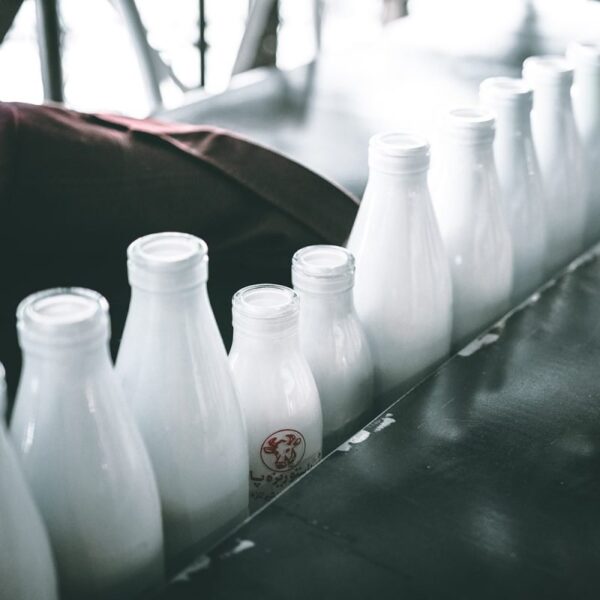
For the best dairy products you should be aware of this following parameters.
In process of fermentation of yogurt, Acetaldehyde is found and it affects on flavor.
L-Arabinose is a sweetener that is a natural sucrose inhibitor used in dietary products.
L-Ascorbic acid can be added for antioxidant properties.
In cheese making you can use Citric acid which is also naturally occurring in milk. It contributes to the aroma.
Main sugar in milk is Lactose which is built of D-Galactose and D-Glucose, while D-Fructose can be used as a sweetener additive. But if we treat the milk with the heat, you can measure Lactulose that is produced from lactose.
One of the most important parameter in dairy industry is L-Lactic acid that is produced naturally by lactic acid bacteria and found in fermented dairy products like cheese and yogurt.
Some manufacturers add D-Sorbitol as a sugar free sweetener.
Ammonia is an unwanted product of protein catabolism on the surface of some cheeses. Excess urea in milk could be due to high protein diet. You can preform enzyme methods to measure ammonia and urea in dairy products.
Enzyme methods in Fruits and Vegetables Industry

In fruits and vegetables industry should monitor the following parameters in enzymatic methods.
Very often you can find Acetic Acid being used in food production or it can be found in pickled vegetables as well as L-Lactic Acid that is occuring naturally in varitey of fruit and vegetable products.
Two products of fermentation that can be found in fruits and vegetables are Acetaldehyde, that is naturally present in fruit like apples, and ethanol that can be found in pickled vegetables and also in jam, honey, vinegar and fruit wines.
Enzymes are used to degrade pulp of apples and pears to increase yield. Changes in pH and temperature can cause the arabinan precipitate and lead to a haze in the product.
Ascorbic Acid is naturally occurring acid found in fruits and vegetable. Commonly used as a food additive for its antioxidant properties and for flavoring.
Another naturally occurring acid found in fruits and vegetable is Citric Acid which is commonly used as a food additive to lower pH to inhibit microbial growth.
As an alternative to citric acid for pH adjustment you can add D & L-Malic acid which is usually natural acid found in fruits.
L-Glutamic Acid is amino acid found in some vegetables (tomato) and it is used as a flavor enhancer (MSG).
D-Sorbitol is sugar alcohol that is naturally occurring in fruits & vegetables. It is used as sugar alternative in dietary foods.
The ripening of apples can be monitored by a fall in succinic acid that is used as a food-flavoring agent.
If we talk about sugars, D-Glucose/D-Fructose are naturally occurring reducing sugars and often used as a sweetener additive.
Enzyme methods in Fruit Juice & Soft Drinks Industry

In fruit juice & soft drinks industry we can monitor the following parameters by enzymatic methods.
Acetic Acid is not common but can be found in fruit juice and soft drinks.
The product of fermentation that can be found in fruits and vegetables is Acetaldehyde, that is naturally present in fruit like apples. You can also find Ethanol in alcoholic and non-alcoholic fruit juices
Ascorbic Acid is naturally occurring acid found in fruits and vegetable. Commonly used as a food additive for its antioxidant properties and for flavoring.
If you beverages need sweetness you can add Aspartame, an atificial sweetener that 200x sweeter than sucrose.
Citric acid is natural acid found in fruits, and it is used to acidify, flavor and as a preservative. As an alternative to citric acid for pH adjustment you can add D & L-Malic acid which is usually natural acid found in fruits. In grape juice you can naturally find Tartaric Acid.
Preservation is performed mainly for semi-processed fruit juices at a dosage level of 0.2 % pure formic acid.
D-Sorbitol is sugar alcohol that is naturally occurring in fruits. It is used as sugar alternative in dietary foods.
You can measure D-Glucose/D-Fructose that are naturally occurring reducing sugars. They are used as a sweetener additive.
If your drinks are too sweet you can add Glycerol to fruit juice to reduce sweetness.
Sulfur Dioxide can be used as a antioxidant and preservative.
Spectrophotometers
How can you see what eyes can not see?
Spectroscopy is very known and used analytical technique that is based on interaction of ultraviolet, visible and infrared radiation (electromagnetic radiation) with matter. These technique use optical materials to disperse and focus the radiation.
In spectroscopy electromagnetic radiation goes through the matter. The matter absorbs electromagnetic radiation and there is a change in energy (partical called photon). We will divide spectroscopy into two broad classes of techniques: absorption and emission.
This method can be decribed by Beer-Lambert Law:
⦁ Beer Law: The absorbance of light through a sample is directly proporitonal to the concentration of its apsorbibng species
⦁ Lambert Law: The absorbance of light through a sample is directly proportional to it thickness (path lenght)
The spectroscopic techniques use spectrophotometers that share several common basic components,
including source of energy, a means for isolating a narrow range of wavelengths, a detector for
measuring the signal, and a signal processor that displays the signal in a form convenient for the
analyst.
The lamp, source of energy, provides a stable, light source ther covers the entire range of visible wavelengths. Most usuall lamps are: Deuterium arc, Xenon, LED, Tungsten.
Wavelength of light from the lamp passes through the sample. That is not a problem if there is only one absorbing species in the sample. If the sample contains two components it it impossible to measure both of them, unless the standards contains the second component at the same concentration it has in the sample. To overcome this problem, we want to select a wavelength that only analyte absorbs.
The simplest method for isolating band of electromagnetic radiation i to use an absorbation or interference filter. Absorbation filters work by selectively absorbing radiation from a narrow region of spectrum. Monochromator is an alternative method of narrowing band of radiation, simplified it controls and separates the light. In monochromator, the light goes into the entrance slit, through dispersive device, and goes to exit slit.
Dispersive devices are prism, ruled grating and holographic grating. One of the best dispersive devices is concave grating that, because of the rotaion of its grating, allows for a specific wavelength to be selected.
After the monochromator, spectrophotometers can have beam spliter, component that splits incident light into two separate beams at a designated ratio. Beam splitters create two beams of energy with defined optical paths where one beam passes through the blank and sample to detector, and other beam passes to a reference detector.

Best option for most accurate spectrophotometric measurement What your eye can't see, Iris can Spectrophotometer HI801
The HI-801 Iris is a sleek and intuitive spectrophotometer that allows for measurement of all wavelengths of visible light. You can customise your methods, take a wide range of measurements, and feel very confident in your testing accuracy with Iris. This compact meter incorporates a number of features that facilitate both fantastic performance and exceptional usability such as:
⦁ Advanced split beam optical system
⦁ Rechargeable Li-ion battery
⦁ User customizable methods
⦁ Step–by–step method creation
⦁ Capacitive touchpad
⦁ Advanced split–beam optical system
⦁ Intuitive menu design
⦁ Universal cuvette holder
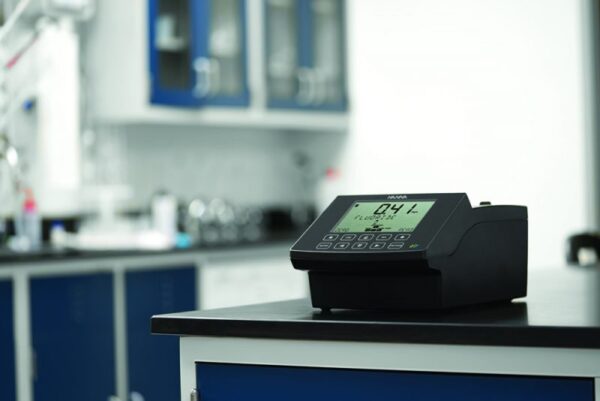
Iris features precise wavelength selection between 340 nm to 900 nm for complete method compliance and accuracy that is necessary in industries like professional laboratories, food industries, water treatment facilities, and more.
Results are consistent and accurate regardless of throughput with the high quality and uniquely designed optics system.
Customisation options include multiple cuvette shapes and sizes, custom calibration curves, and methods.
The 6 inch display screen is large and easy to read. The high contrast makes every character on the display stand out – even during outdoor use.
With its universal cuvette holder and auto-recognition feature, cuvette sizes can be changed when needed between round, square & vial.
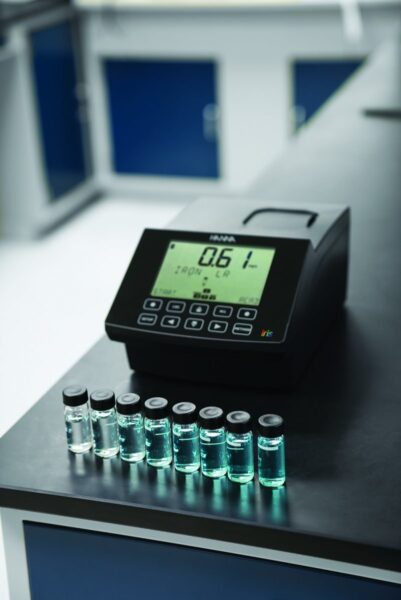
No need for measurement conversions
Whether you are testing for chlorine or running enzymatic assays, our spectrophotometer will conveniently display results in the units that matter most to you. iris can measure in transmittance, absorbance, and concentration based on your need.
Pre-programmed methods with the option to expand
iris comes pre-programmed with more than 80 commonly used chemical analysis methods to help you get started. Simply update these methods by connecting to a computer or flash drive.
Customise your iris with up to 100 personal methods. iris will guide you through the method creation process step-by-step. For added versatility, each method can include up to 10 calibration points, five different wavelengths, and up to five reaction timers.
Easily access your favourite methods directly from the home screen to save time.
Built in timers make measuring seamless. The countdown timer displays the time remaining until a measurement will be taken, ensuring consistent results between measurements and users. If you get stuck, the tutorial mode will walk you through the steps.
Designed for dynamic environments
iris’ compact profile and long-lasting battery make it easy to set up anywhere in your lab. The rechargeable lithium ion battery lasts for 3,000 measurements, or 8 hours – well over a full day of use out in the field.
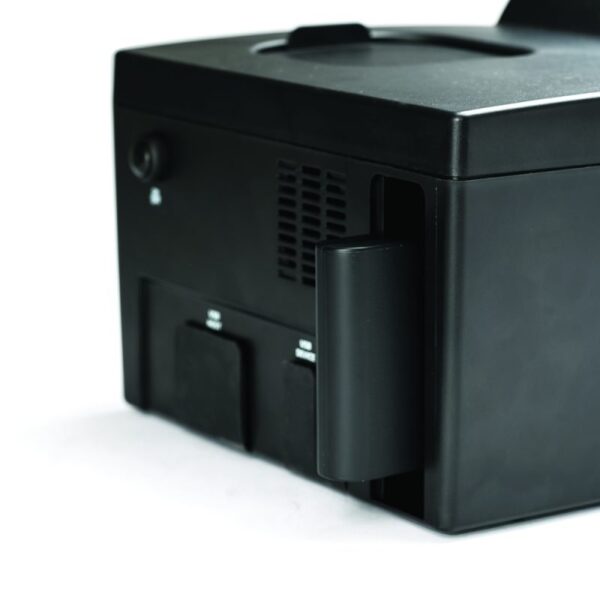
Quality data without the hassle
Export your results with a USB drive or direct PC link organized by sample ID, method, or date range. Save data as a .pdf or .csv for maximum data integrity or flexibility – all without the use of specialized software.
Sort and share your data
Save data as a .pdf or .csv for maximum data integrity or flexibility. Have the freedom to choose the file format that is best for you.
Menu navigation that makes sense
Quickly navigate between screens with custom keys, and access your favourite methods directly from the home screen with our “favourite methods” feature.
All of your important information is easily visible
With a 6” display, the screen is large and easy to read. The high contrast makes every character on the display stand out even during outdoor use. The wide viewing angle allows for measurements to be seen from far away, so while working around the lab it is not necessary to hover over the meter to see the measurements.
Zero resistance with a capacitive touch pad
Menu buttons are part of the display. Built to be fully sealed and easy to clean, the meter recognises key touches even through gloves.

Change sample size easily
With its universal cuvette holder and auto-recognition feature, cuvette sizes can be changed when needed. The programmed cuvette size will be displayed on the screen every time you test to ensure that the proper path length is being used by the meter when calculating measurements for correct results.






